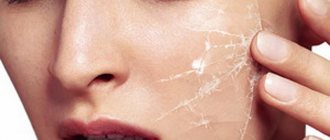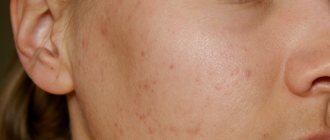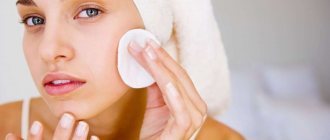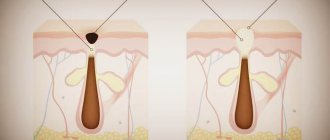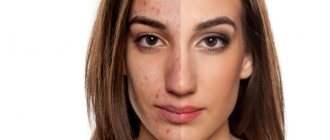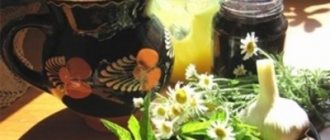- What are acne, sores on the face?
- How to remove and quickly get rid of sores after a pimple?
Acne sores are a special stage of inflammation of acne that has developed under the surface of the skin. Such inflammations are usually not noticeable from a distance, but a person can feel them by running a finger over their surface. Sores after acne or, as they are also called, blind pimples initially do not have a head. , like other types of acne, present as white pus or blackheads on the body or face.
How to treat weeping wounds at different stages
At each stage of a weeping wound, appropriate treatment is required.
During the inflammation phase, the main task is to ensure the outflow of fluid from the wound. It is better to use water-soluble ointments, Levosin and Levomikol. The use of conventional ointments and antibiotics is not recommended, since they do not contribute to the most important thing - the outflow of fluid, and the use of Vishnevsky ointment is highly discouraged.
Dressings should be done at least once a day, and depending on how quickly the bandage gets wet, more often. It is unnecessary to remind that complete sterility must be observed - the person doing the dressing must use sterile gloves, and if they are not available, disinfect their hands with an antiseptic. The use of agents that enhance blood circulation will also be relevant. It is allowed to wash the wound with disinfectants, for example, a solution of potassium permanganate.
When treating more complex weeping wounds, as well as trophic ulcers, it is recommended to use Biaten Ag - this is a sponge with silver ions, which is used as a dressing. It will be convenient for the patient that this sponge does not have an adhesive edge, which means it will not stick to the wound. When using this drug, the liquid released from the wound is absorbed by the sponge and does not irritate healthy skin, and therefore the sponge may not be changed for a long time, up to a week. Silver ions have a beneficial effect due to their powerful antiseptic properties. The use of Biaten Ag allows you to speed up healing.
During the regeneration phase, it is recommended to use completely natural extracts: Kalanchoe juice, sea buckthorn oil and rosehip oil. These plants have a property that is precisely necessary in this case - to stimulate tissue restoration.
What are the types of sores on the face?
What is a keratoma and how to treat it Symptoms and photos
Sores on the face are divided similarly to the diseases that caused them. Major skin diseases, including the face, include:
Dermatitis: preoral, allergic, atopic (eczema) and contact; herpes; acne; streptococcal infection.
Symptoms of dermatitis
Dermatitis is a serious disease that requires mandatory medical attention.
Therefore, it is very important to identify its symptoms
Varieties of dermatitis have symptoms that vary slightly, but are generally similar:
Redness - strong or weak; itching; peeling; blisters.
If at least one of the above signs is present, you must immediately visit a doctor, or your face may become completely covered with sores.
Herpes
Herpes is a disease of the facial skin and mucous membranes caused by infection. Potentially, we are all carriers of the virus of this disease, which in some is present in a progressive form.
Herpes looks like an unpleasant sore that feels painful when touched.
. Under no circumstances should it be recommended to touch or scratch such sores on the face.
Acne
Blackheads are red pimples that can appear on the face regardless of age.
They suffer from oily skin
, the cells of which become clogged with excess sebaceous glands - bacteria multiply in this environment and acne occurs. They may also appear as black dots.
Streptococcus on the face
Another trouble on the face is streptococcal infection or pyodermatitis.
This disease manifests itself in the form of red blisters filled with pus
and is contagious. Water procedures intensify this disease.
What is a pimple
A pimple is a sebaceous gland duct clogged with fatty secretions and horny scales of the epithelium, into which pathogenic bacteria have penetrated, causing inflammation.
It all starts with the formation of open and closed comedones - blackheads or blemishes. Haven’t you at least once pressed your nails on enlarged pores, from which thick white sebum is released?
But it is absolutely impossible to do this, because damaged tissues are an entry point for infection.
It is for this reason that papules, pustules, nodes and purulent cysts form. And acne not only affects the entire face, but also spreads to the body.
Photo: formation of an abscess
A subcutaneous pimple looks like a large lump on the surface, and the pus is located deep in the dermis.
It often happens that I pressed and pressed on the tubercle, but nothing was squeezed out. And now a torn wound has appeared, and the girl does not know what to do with it.
But the pathological contents can leak not outward, but inward, which will lead to the appearance of new rashes.
But not everyone really imagines all the consequences of such amateur activities, which often turn out to be much more serious.
Traditional methods of wound healing
How to treat cracked fingers
There are several methods of traditional medicine to eliminate pain and promote rapid healing of wounds.
1st method:
It is necessary to prepare a medicinal product from the following composition: 100 g of coniferous resin-resin (grind or crush), 100 g of lard (preferably fresh), 100 g of beeswax. Mix all the ingredients, put on low heat and bring to a boil, remembering to stir occasionally. Let simmer for 10 minutes. Remove from heat, wait to cool, and transfer while warm to a glass container.
Before using this remedy, the wound should be treated with lime water. It is prepared as follows: 1 tbsp. quench a spoonful of quicklime with 1 liter of water. Let it sit for 5-6 hours. Carefully drain the water and rinse the wound with it. Then take the remedy, smear it on a clean cloth and apply it to the wound. Dress the wound so that the bandage does not fall off. The bandage with the applied treatment should be changed after 1-2 days.
2nd method:
Prepare a medicinal ointment according to the following recipe, mixing: 80 g of natural bee honey, 20 g of fish oil, 20 g of xeroform. The product is ready. Apply a clean cloth to the surface and wrap the wound as a bandage. It is necessary to change the bandage after 1-2 days. The medicinal ointment must be stored in the refrigerator.
If everything is done correctly and hygienically, but the wound still does not heal and a purulent process develops, you need to seek help from a specialist. The doctor will examine the sore spot, recommend a medicine for its treatment and help take additional measures for effective treatment.
How to make a wound less noticeable
The inflamed wound remains bright red for several days. To make your skin smooth and a pimple less noticeable, you can use a few tricks:
- Apply Visine to the wound.
- Treatment with nasal drops helps. Soak a small piece of cotton wool with vasoconstrictor drops, place it in the refrigerator for 10 minutes, then blot the affected areas with it.
- Herbal ice cubes are useful in any situation. A decoction of chamomile, calendula, and parsley is poured into ice molds and frozen. Inflammation and redness will easily go away if you wipe the skin with medicinal ice several times a day.
The following pharmaceutical products help:
- Depanthol;
- Pantoderm;
- Sintomycin;
- Metrogil;
- Bee celandine.
- Sledotsid;
- Contractubex.
Depanthol renews cells in a short time. Pantoderm accelerates healing. Synthomycin eliminates inflammation, fights infection, and heals wounds. Metrogyl destroys germs, preventing them from spreading. Bee celandine has a disinfecting, restorative effect. Sledocid ointment and Contractubex gel prevent the appearance of scars and heal quickly.
Folk drying remedies
How to treat a boil at home
The most popular alternative medicine for the treatment of open skin injuries are the following plants and components:
- Spruce resin;
- Beekeeping products;
- St. John's wort;
- Olive oil;
- Potato;
- Golden mustache;
- Onion.
Potato juice
Potato juice is very good at drawing out excess liquid from an open wound. To use it, you need to take 2 fresh potatoes, rinse well under running water, grate, and squeeze out the juice using gauze. Dip the bandage into the resulting liquid and apply to the damaged area.
Onion
Onions are used to clean, disinfect and remove moisture. Take one large onion, peel it, and grate it on a coarse grater. The resulting paste is applied to the open wound. Wrap the top with gauze or bandage.
St. John's wort oil
For the next manipulation, the leaves and flowers of a plant called St. John's wort are suitable. Cut and take 100 grams of the resulting material. Next you should add half the amount of golden mustache. The resulting mixture should be poured with one glass of olive oil. The container should be well closed and placed in a place inaccessible to sunlight.
This remedy helps equally well with open and wet wounds.
If the wound healed but was re-injured, or bleeding began, you can use willow bark powder. It must be mixed with butter. The resulting product is applied every 40-60 minutes.
For this recipe, you should choose a plant that is more than 3 years old. The juice is squeezed out of the fleshiest leaves. Sterile gauze is soaked in this juice and applied to the damaged area. Agave, as aloe is popularly called, is excellent at drawing out purulent formations from an open, wet wound.
Calamus infused with water
The product has excellent anti-inflammatory properties. In order to prepare the remedy yourself, you should take calamus root, chop it, and dry it. A tablespoon of dry plant is poured with 250 g of boiling water. Next, the dishes with the product are heated in a water bath for a quarter of an hour. The resulting medicine is condemned and used to wash open wounds on the skin.
Honey infusion
Another effective remedy can be prepared as follows. Beeswax, flower honey, medical alcohol or vodka are taken in equal proportions, mixed and steamed. When a homogeneous mass is formed, remove the product from the stove and filter with gauze. All that remains is to place the medicine in a container that closes tightly.
These recipes for wound healing agents will help with mild to moderate wounds. However, there are times when traditional medicine recipes do not cope with the task. If the wound does not heal and its condition worsens or remains unchanged, you should seek medical help from a qualified specialist.
Recommended reading:
Treatment methods
To avoid problems with wound healing, you need to know how to properly care for the damaged area. How quickly the tissues recover depends on proper treatment.
In case of damage to the skin, you must:
apply an antiseptic to the wound and the skin around it. Iodine and hydrogen peroxide perfectly eliminate the risk of infection. They should be in every person's home medicine cabinet. Before applying such products, you must wash your hands well with soap or wear sterile gloves, if available; in some cases, it is necessary to use antibacterial agents for several hours after injury. Only a specialist should prescribe such drugs; a bandage must be applied to the wound. It is advisable to use materials that allow the skin to breathe. Experts recommend applying wet dressings and changing them twice a day; if purulent processes begin, it is necessary to use an ointment that has pulling properties. Dressings are done at least three times a day
Vishnevsky ointment is popular for such situations; in the absence of an inflammatory process, a drying gel can be applied to the damaged area to accelerate tissue regeneration; It is important to eat properly so that the body gets all the necessary vitamins and microelements that affect wound healing processes.
How to remove crusts
Of course, the best option for removing crusts from the surface of the skin without additional trauma is their natural peeling, which occurs approximately 5 to 7 days after their formation. But you can remove the crusts a little earlier, in particular, on the 3rd or 4th day after squeezing out pimples or drying them out, provided that treatments are carried out frequently during these days.
The safest way here is to visit the sauna. Water and steam soften the skin and help cleanse not only the surface of the epidermis, but also the pores and sebaceous ducts. During steaming, the pores expand and open, which forces the crusts to peel off and fall off without additional injury. To remove them from the surface of the skin after steaming, you can use a soft washcloth and regular cleanser.
It is important to remember that visiting the sauna to remove crusts is only possible for 3–4 days. If you try to remove them this way early, it will cause re-damage to the skin.
A sauna can also be replaced with a hot bath with the addition of sea salt and herbal decoctions, if there are no contraindications to its use. The water should be hot, but not cause discomfort. You should take such a bath for at least 20–30 minutes, after which you need to lather yourself with your usual product using a washcloth.
To remove crusts from acne on the face, you should thoroughly steam the skin over a decoction of medicinal herbs, and then immediately apply a scrub, preferably home-made, to the skin. As an exfoliant in the scrub, you can use semolina, ground oatmeal, bran, natural ground coffee or coffee grounds.
How to treat a weeping wound
The main goal of treatment is to ensure the outflow of tissue fluid. For this, ointments Levomekol and Levosin are used. They are applied under a dry bandage. They are soluble in water and create almost no barrier to tissue fluid.
The wounds need to be dried. Powder dosage forms meet this requirement. They use combined powder preparations containing an antibiotic (Baneocin, Streptocide, Penicillin). It is necessary to powder the wet surface evenly with a thin layer and apply a clean, dry bandage. In addition to drying, they prevent bacteria from entering the wound. Ointments with an antibacterial effect are not used due to the fact that they disrupt the outflow of fluid and increase the risk of suppuration.
Modern treatments include the use of special sponges. The sponge contains components that have an antiseptic and wound-healing effect. The sponge is applied directly to the skin defect, does not require frequent dressing, and can be easily removed if necessary.
The use of alcohol solutions (iodine, brilliant green) also has a drying effect. But they cannot treat the wound surface. By drying out the exposed tissue too much, they further damage it and create a thick scab on the surface, making it difficult for the plasma to drain out. Therefore, their use is possible only along the edge of the wound defect. This reduces the number of bacteria on healthy skin directly around the damaged skin.
In situations where the scab forms too quickly and is thick, it needs to be softened. You should use a hypertonic solution of table salt (1 tablespoon per 1 glass of water) 5-6 times a day. It will soften the crusts and help draw fluid out of the wound. If the crust is thin and formed after several days of treatment, the wounds can be left open for several hours a day.
Pain is a frequent accompaniment of weeping wounds, so sometimes it is necessary to use anesthetics (Trimecaine). In addition, there are products that combine a number of components, including an anesthetic.
If such a wound has formed against the background of a known disease (atopic dermatitis, eczema), then treatment may include the use of ointments with local corticosteroids. They have a pronounced anti-inflammatory effect, so the effect occurs very quickly. However, these drugs have side effects, and the question of their prescription is decided only by the doctor in each case individually.
The use of these products for a week gives clear results: the wound gradually becomes smaller and becomes covered with newly formed granulation tissue.
How to recognize and diagnose
Such skin rashes do not immediately appear clearly. You can take action in advance by detecting the symptoms of such wounds. In most cases, dermatitis begins with peeling and dry skin. Small crusts may form in areas of peeling. The area of skin becomes slightly swollen and red.
After a while, a rash forms at the site of redness. Rash blisters come in a variety of forms, with clear liquid, blood, or pus inside. After these rash blisters burst, weeping sores remain in their place. In more complex cases, weakness, fever appears, and the body begins to shiver.
If left untreated, there may be serious consequences such as anemia, intestinal disorders, bacterial infection. Dermatitis can also spread to the entire body and become chronic, which is difficult to cure and takes several years to treat.
How to identify sores
Only a specialist can accurately diagnose the disease, so if you notice any symptoms, it is better to immediately contact a dermatologist. At the first examination and careful questioning, the doctor will be able to make a diagnosis on the day of treatment. Based on appearance, a dermatologist can make two diagnoses. The first is eczema, the second is dermatitis. With a more thorough examination, the diagnosis will be clarified.
Basically, eczema is a lesion of areas of the skin, inflammation occurs in the epidermis. Whereas dermatitis affects deeper areas of the skin and body systems.
During the interview, the doctor will rule out or confirm the primary causes of the disease. Such as: an allergic reaction, chemical poisoning or occupational hazard. If there is a lack of information, analyzes and studies will be carried out. Usually, blood donation is prescribed for hemoglobin and leukocytes, and the presence of sexually transmitted diseases. The functioning of the gastrointestinal tract is checked. Scrapings from the site of facial lesions are also examined.
On foot
The legs are also closely related to the functioning of the internal organs, just like the torso. Therefore, pathologies of the skin on the legs are very often the first signal of incorrect operation of one or another body system.
Diseases of the cardiovascular system, pancreas, kidneys and stomach often manifest themselves this way.
In cases where skin diseases occur on the legs, you will have to undergo a comprehensive examination by a therapist, cardiac surgeon and urologist.
Wound healing agents for weeping wounds
If the skin damage is not too large and shallow, then it is quite possible to cure it at home. The following drugs are suitable for this:
- Salicylic ointment - the ointment is applied in small drops, then a bandage is applied to the wound.
- Ichthyol ointment - used like salicylic ointment.
- Streptocide - crush it and sprinkle it on the damaged area.
- Zinc ointment is highly effective for treating various types of dermatitis, as well as weeping wounds. Excessive fluid secretion stops after using this drug.
- Troxevasin - used to treat varicose veins.
- Heparin ointment is used in the treatment of thrombophlebitis.
- Bodyaga - relieves swelling.
- Eplan - used to destroy bacteria and disinfect damaged tissue. If you periodically apply this remedy, the likelihood of infection of a weeping wound is significantly reduced.
Development of ulcers on the face
If a patient has an ulcer on his face, the first thing to remember is the possibility of injury.
At first it may be a barely noticeable spot from a scratch. In the case of damage caused by the patient to himself, and when other causes are excluded, the presence of false dermatitis can be assumed. If there is an assumption about the radiation nature of the ulcer, it is necessary to find out from the patient whether there is a history of radiation therapy. The skin in the area of reduced sensitivity is easily susceptible to traumatic damage.
The reason for the development of anesthesia of the facial skin
The patient may have undergone surgery to remove the trigeminal ganglion due to neuralgia. In rare cases, the cause of facial anesthesia is syringobulbia. Find out from the patient whether there is a history of insect, animal or human bites, which could be the gateway to infection with subsequent formation of ulcers.
Malignant ulcers
usually located on open areas of the face. Find out the patient's specialty. Malignant ulcers most often occur in people who work outdoors and are exposed to ultraviolet radiation. Corroding ulcers are localized mainly above the line running from the corner of the mouth to the earlobe. The frequency of their occurrence increases with age.
Malignant ulcers in the absence of inflammation
usually painless. They are often pigmented, and the patient’s indications of a change in a mole that previously existed at this site make it possible to suspect malignant melanoma. These changes include changes in size, color with increased pigmentation; bleeding and ulceration; the appearance of itching; inflammatory ring; formation of additional nodules; the presence of palpable enlarged lymph nodes.
The inflammatory process caused by the herpes simplex virus
may spread around the lips or nose. Usually there are complaints of itching and burning; blisters that form on the hyperemic area of the skin burst and become covered with crusts, followed by ulceration.
Blistering rashes in patients with herpes zoster
may be located in the zone of innervation of the trigeminal nerve. For several days before the rash and pain appear, the patient experiences fever and malaise.
Syphilis
is a rare cause of facial ulcers; patients with syphilis may develop either chancre or gumma.
Leishmaniasis
is transmitted by flying insects, and the patient must have a history of his stay in India, Africa, the Middle East or the Mediterranean. In this case, the patient should remember the itchy papule formed after the bite, in the place of which an ulcer has formed.
Etiological factor of keratoacanthoma
is a viral infection. Keratoacanthoma should be carefully distinguished from squamous cell carcinoma, which is similar in appearance. Keratoacanthoma develops in adults as a rapidly growing tumor with a core filled with keratin. Its growth continues for 2-3 days. and then often resolves spontaneously within a few months.
The patient's indication of a history of inflammatory bowel disease suggests gangrenous pyoderma of the face.
E. Raftery, E. Lim
Facial ulcers and other diagnostic materials.
How to speed up the healing of herpes?
With herpes, unsightly sores appear on the skin - blisters, which are replaced by unpleasant crusts. Unfortunately, it is not possible to completely eliminate the virus that causes the disease. However, there are methods that will speed up the course of the disease and help the skin recover faster. In particular, doctors recommend treating herpes with:
- Antiviral drugs for internal use.
- Antiviral ointments for topical application.
- Taking immunomodulators (Viferon or Interferon, Imunofan, herbal medicines - with echinacea, etc.).
You should not apply cold or heat to the rash sites, this can only lead to an even greater spread of painful blisters.
What ointment should I use to remove rashes?
It is best to lubricate the elements of herpes using ointments with antiviral components, for example with:
- Acyclovir, valacyclovir, famciclovir. Such ointments suppress the replication of the virus; it is advisable to use them at the first signs of the development of the disease - with itching and burning, even in the absence of blisters.
- Acyclovir in combination with hydrocortisone. This ointment is called Zovirax Duo-Active and can not only suppress the activity of the virus, but also quickly neutralize pain and discomfort.
- Acyclovir in combination with interferon and lidocaine. This ointment is called Herpferon, and it helps stimulate the immune system, suppress the reproduction of the virus, and neutralize pain and itching. It is believed that its use prevents the formation of new rash elements and helps speed up healing.
The use of ointments really helps to improve the condition of a patient with herpes. But still they do not speed up the healing process too much.
In order for wounds to heal easily after an illness, it is important not to injure the crusts left after the bursting of the bubbles. Otherwise, scars may remain on the skin.
the wound does not heal
Found (190 posts)
surgeon December 28, 2020 / Andrey / Moscow
... which was formed after the fall! A month has already passed and the wound
is not healing
.
Or rather, the seam has healed, but what’s in Nutri is not. Liquid constantly collects, the skin does not
heal, and every time they suck out the liquid with syringes, but there is no result. ...open
surgeon February 22, 2020 / Bakyt
Good afternoon I accidentally stepped with my entire bare foot on a children's toy, creating a wound in the middle of my foot, all over my feet. Treated with peroxide and alcohol. Minutes... open
February 22, 2020 / Anonymous
If a crust has formed, do not
nothing needs to be done, let
the wound heal
.
surgeon September 20, 2020 / Valentina… / Riga
... The problem seems to be small, but for some reason it’s not
passing... My mother is 90 years old, more... about a chair, perhaps....
The large wound
on my shin is already
healing
, although with difficulty and for a very long time.
... and dry, but this bag does not
go away, everything was calm around, I thought ... open
(1 more message)Last 5:
surgeon August 23, 2020 / Olga / Samara
...my mother got a splinter in her foot, she couldn’t
They were able to and the foot began to fester.
On the fourth... next day they bandaged it and the wound
to be clean, and a day later the leg... was injected with antibiotics.
Please tell me what’s wrong with my mother’s foot and why it’s not healing
. open
surgeon March 24, 2020 / Victoria... / Biysk
..., or Vishnevsky. We tried everything. Wound
It heals
very slowly from the inside, the cavity has become... the wound is getting smaller, but
is not
cleared.
The day before yesterday I washed the wound and for the first time... even more, no
. Please tell me how to proceed... open
surgeon March 19, 2020 / Karina / Moscow
...pain, then a bubble swelled, a decent one, on the ankle, on top. I don't
I know what to call it correctly.
I went to the hospital and they told me to open the bladder because it was big. Now I have wound
that hurts and
won’t heal
.
What should I do? open (5 more messages)Last 5:
surgeon January 25, 2020 / Ivan
Hello. After ankle surgery, I don’t have
large lump 2x2 mm.
And a wound
on the bump.
The wound
sometimes
heals
and appears again. The operation was performed on July 14, 2014 open
surgeon August 20, 2014 / Alexander... / Yakutsk
On August 16, 2014, he fell from a height of one and a half meters onto the glass, cut an artery in the crook of his arm, friends pinched him with a belt and called an ambulance. arrived in 20 minutes. They took me to the emergency room, but they couldn’t... open it
September 1, 2014 / Alexander…
Hello again!, Rana
mine
is healing
, today is day 14, here’s the question: I wore a bandage before (I supported my arm... in the elbow bend), today the bandage was removed, but I
n’t
! :((When I try to straighten it it hurts, - and...
surgeon August 22, 2014 / Tatyana / Moscow
... peroxide, levomekol. Now I sprinkle baneocin powder. The wound
has not
yet healed, I wear a bandage every day (especially after trips... it’s normal. Visits to doctors
do not
help. Please tell me why it’s taking so long
to heal
and whether it will heal at all, I’m already desperate to open
surgeon January 11, 2014 / Elena / Barnaul
Hello. At work in the store, a forklift on “Kara” ran over my leg. Result: a fracture of the 2nd, 3rd, 5th metatarsal bones on the foot and a shallow wound on top. I immediately went to the emergency room. They applied... open
January 14, 2014 / Tatyana
... wound
- about a centimeter deep and in diameter,
doesn’t heal for
almost four... no. Antibiotics (baneocin, gentamicin, tetracycline)
don’t
help, chymopsin turned out red... around the wound. Ointment with iodopyrone
doesn’t
help.
The wound
was caused by a pimple - I removed it...
The most common representatives
Human skin diseases, photos and descriptions of which are known to the world, have a huge number of types, species and subspecies. However, among them there are 15 most common diseases.
Acne
In common parlance – acne. The disease is characterized by the appearance of inflammatory processes in some areas of the sebaceous gland, specifically inflammation of the hair follicles and, directly, the area of the gland under them.
This is the nightmare of all teenagers, many adults and even the elderly. The exact cause has not yet been determined.
The appearance of acne is associated with propionium bacteria, which are found on the surface of every person’s skin. Their active life activity provokes a violation of the integrity of the bactericidal mechanism of sebum.
The most common triggers for acne are:
- stress;
- menstruation;
- hot weather;
- binge eating;
- excessive hormonal activity (for example, during adolescence).
Symptoms of the disease:
- fragmentary redness of skin areas;
- the occurrence of painful boils, pustules and small ulcers;
- excessive secretion of sebum.
Common people attribute the name “oily skin” to the latter.
Dermatitis
The disease is similar to acne, but the causes of its occurrence are different.
The disease is a lesion of the skin, namely:
- redness;
- ulcers;
- ulcers caused by various types of aggressive substances, often of a chemical nature.
There are also injuries of a physical nature - intentional scratching of the skin, and biological - multiple bites of insects, fleas, lice or other small parasites, as well as an allergic reaction to them.
Lichen
This is a disease of the upper and middle layers of the dermis, which consists of scabs and rashes, which, if not properly and untimely treated, can turn into purulent wounds. In addition, symptoms of the disease include severe itching, redness, and excessive dryness of the skin.
Ringworm is often infectious in nature and is transmitted through an infected person or animal.
The cause of occurrence is contact with the skin and the active development of three types of lichen fungi:
- geophilic (coming from the soil);
- anthropophilic (developing and living on human skin);
- zooanthropophilic (dermal-dwelling animals, both domestic and wild) types.
Herpes
This is a very common viral disease.
It consists of small ulcers and mucus bubbles that are grouped in one area, often:
- in the corners of the lips;
- on the mucous membrane;
- under the nose;
- on the genitals.
Despite the fact that the disease is very common and can be easily cured with the right approach in a timely manner, the virus becomes very dangerous when combined with other diseases. If a patient is sick with encephalitis, meningitis, or a disorder of the mucous membranes, herpes can become a very serious problem for him, and in this case it will be difficult to treat.
The disease tends to “spread” - gradually increasing the area and depth of skin damage. After the initial stage passes and the disease takes root, the patient’s temperature rises, signs of acute respiratory viral infection are observed, and the purulent wounds become larger.
Herpes has many subtypes, complications from which can manifest themselves as pneumonia, cardiac dysfunction, and the development of concomitant diseases. Herpes is a significant blow to the human immune system. Among other things, the disease is transmitted from a sick mother to a newborn child - type 6 herpes is widespread among children.
Eczema
This is a skin disease that looks like small blisters, scales, cracks and miniature sores. In addition to the obvious symptoms, the patient also suffers from constant severe itching. Unlike the previous 4, this disease is not contagious. It is inflammatory in nature and often chronic.
The causes of eczema are external and internal. The first are chemical or physical damage to the skin, followed by inflammation. The second is the result of various diseases of the liver, nervous and endocrine systems occurring in the body.
Acne vulgaris
This is the formation of large papules, comedones and nodes, as a result of prolonged inflammation of the hair follicles of the skin. Externally, these neoplasms are similar to acne, but are much larger in size than ordinary pimples; an impressive amount of pus and fluid quickly accumulates inside them.
The reasons for such inconveniences are:
- disruption of the hormonal system;
- regular failure to comply with hygiene rules;
Skin diseases in humans mainly appear due to lack of personal hygiene.
- disruptions in the functioning of the cardiovascular and digestive systems.
Their spread can only be dealt with through long-term treatment after a thorough consultation with a dermatologist and appropriate tests.
How to properly treat wounds
When treating ulcers and wounds, you should be especially careful, because... at the moment there is a high risk of introducing other bacteria and infections into the affected area. Avoid opening pimples and scratching them yourself, as such actions can cause further spread of infection on the face.
Rules for handling wet disease include:
- Before treating wounds, hands must be thoroughly washed and disinfected;
- for dressings, use a sterile bandage (if necessary);
- avoid opening wounds or ulcers;
- If the bandage is stuck to the damaged skin, soak it in chlorhexidine solution and remove it easily.
The basis for quick treatment of wet dermatitis is compliance with personal hygiene rules and taking antihistamines.
Most often, wet sores occur against the background of pathologies associated with the digestive or nervous system. In this case, the attending physician prescribes treatment to exclude the underlying disease with the mandatory use of antibacterial, antiviral agents and drugs that restore microflora. When the underlying disease is neutralized, treatment of dermatitis begins, however, as a rule, at this stage, skin lesions disappear. Timely diagnosis and prescribed treatment of a weeping sore will prevent the development of an acute form into a chronic one.
They continue to scratch the skin mercilessly, trying to extract the contents of the eel.
And if the pus does not come out of the inner lump, they pierce it with a needle, getting to the meat itself.
- All information on the site is for informational purposes only and is NOT a guide to action!
- can give you an ACCURATE DIAGNOSIS !
- We kindly ask you NOT to self-medicate, but to make an appointment with a specialist
! - Health to you and your loved ones!
Do you agree, who hasn’t had the experience of picking a pimple until it becomes a deep wound, which becomes inflamed again and doesn’t heal for a long time?
To prevent this from happening, let's look at ways to heal acne sores without complications.
What to do if you squeeze out acne?
Sometimes, even while squeezing out a pimple, it becomes clear that nothing good will come of this idea. If there is a visible sore or noticeable redness, this could potentially become an even bigger problem than the pimple itself. You need to act quickly and treat this area:
- Hydrogen peroxide.
- Miramistin.
- Chlorhexidine, etc.
You should not use alcohol solutions of herbs or alcohol itself for primary treatment; it is also better to refrain from using iodine. Such an initiative may result in the appearance of an indelible dark spot that is ingrained into the skin.
How to avoid wounds
A few simple rules will help protect the patient from accidental injury.
- Never walk without shoes. This measure will minimize the risk of accidental injury in the home.
- Choose loose and comfortable shoes. Open shoes such as flip-flops and flip-flops should be avoided, as they can rub between the toes.
- Examine your feet daily for new lesions.
- If a wound has formed, you should take a photo of it. This will help in monitoring its development. If the wound enlarges, you should immediately consult a doctor.
- Minimize walking in the cold, as this can lead to frostbite of the extremities.
- Do not wear hosiery with a tight elastic band.
It is also important to avoid accidentally acquiring a fungal foot infection. Symptoms of this disease can be seen in many photos.
If you discover similar symptoms, you should immediately visit a dermatologist.
You can see what the ulcers look like in the photo. They cause a lot of discomfort and can lead to irreversible consequences. To prevent this from happening, you should treat the problem in a timely manner and do not be afraid to consult a doctor for help.
https://www.youtube.com/watch?v=FahtpDfyQB0
Professional ways
How to treat wounds in the mouth? There are effective means for this:
- Medicinal ointments. In this case, Benzocaine helps. The ointment has an anti-inflammatory effect, so it relieves inflammation in a short time. The components of the drug have analgesic properties. You should use the ointment only on the basis of the recommendations of a specialist. For young children, it is advisable to choose other medications, since Benzocaine leads to allergies. Kamistad ointment will also work.
- Gel "Xikain 2%". The product relieves pain, inflammation, pathogenic bacteria and microbes. The drug should not be used for small children, as it contains toxic components.
- Ointment "Solcoseryl". Allows you to eliminate sores in the mouth in a short time.
- Antibiotics. Such drugs are used in severe cases of the disease. The type of medication and duration of treatment should be prescribed by a doctor individually.
- Painkiller injections. They quickly relieve pain. But such injections do not eliminate the causes of the disease.
Because mouth sores and their treatment may vary, it is important to see a doctor. The specialist will choose the most effective drug based on the health status of the individual patient.
